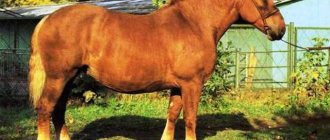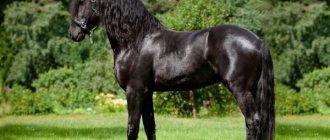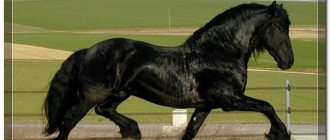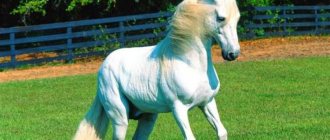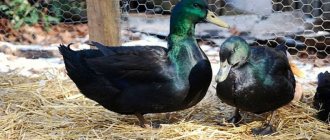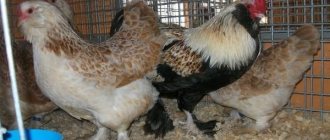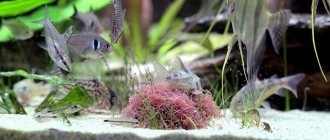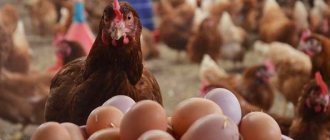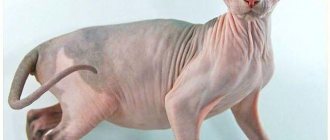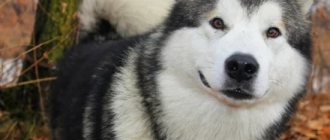The Akhal-Teke horse breed is one of the oldest purebred riding breeds that appeared 5 thousand years ago. It is believed that the homeland of these horses is the territory of modern Turkmenistan, and the Akhal-Teke horse itself influenced the development of such elite riding horses as the English racing horse, Donskaya, Trakehner and many others. The purebred nature of this variety is explained by the fact that throughout its existence the Akhal-Teke did not mate with other breeds, so there is no admixture of foreign blood.
Historical information
Representatives of this amazing breed are distinguished by many unique properties and advantages. Among them:
- A graceful appearance that sets these beauties apart from the rest.
- Amazing endurance and running speed.
- Adaptability to different climatic environments.
- Wide areas of use.
Thanks to such advantages, Akhal-Teke horses were even used for military campaigns, and they often appeared in the stables of famous military leaders of antiquity, including Genghis Khan, the Persian king Darius and many others.
According to historical facts and written findings, which were compiled by legendary authors of antiquity, the famous horse of Alexander the Great, called Bucephalus, also belonged to this breed.
The world famous traveler from Italy Marco Polo wrote about the amazing horse, creating notes in his travel journals that mentioned expensive animals with a graceful appearance. After the development of the sea route to India and the decrease in the influence of the Great Silk Road, sales of Akhal-Teke horses decreased significantly, so their popularity also suffered.
Nevertheless, true fans of truly fast, hardy and beautiful horses continued to buy representatives of this breed, claiming that they had no competitors.
The Akhal-Teke horse often had other names. For example, in ancient times it was called the “Paradise Horse”, “Heavenly Argamak”, “Golden Horse of Parthia”, “Kakheti Horse”, etc. However, as historical facts say, different names are associated only with the belonging of the breed to one or another nationalities.
It is known that the horse was originally called Massagetian, and then Parthian. After some time, the name changed to Turkmen, and soon - Nisei. Before receiving its current name, the breed was called Persian. And only at the end of the 18th century, horse breeders approved the name “Ahal-Teke”, which is associated with the name of the oasis “Akhal”, as well as the “Teke” tribe living in its vicinity.
Breeding
Akhal-Teke horses enter puberty at the age of two years. But they start breeding this breed much later. The period when the mare is ready to let the stallion approach her is called “hunting.” During this period, she is artificially inseminated.
To maintain the purity of the breed, a suitable stallion is selected in advance for the mare. In this case, the suit of the future parents is taken into account.
Pregnancy lasts 11 months. Most often, one foal is born; less often, twins are born. Newborn babies seem clumsy and helpless, but after 5 hours they can move without assistance.
For the first six months, the mare feeds her babies with breast milk. After this, the cubs are transferred to plant foods.
All newborn purebred foals are subject to a single breeding registration. The accounting is carried out by the All-Russian Research Institute of Horse Breeding, located in the village of Divovo, Rybnovsky district, Ryazan region.
After drawing up the appropriate zootechnical record, all activities for raising purebred foals, from feeding to education, are carried out under the constant supervision of specialists.
All purebred Akhal-Teke horses in Russia are provided with qualified veterinary care. It does not matter which livestock the animal belongs to, public or private.
Until the mid-twentieth century, Akhal-Teke dogs were bred exclusively in Turkmenistan.
Currently, Argamak breeding centers are concentrated at the Lugovsky Stud Farm in Kazakhstan, the Stavropol Stud Farm in the Republic of Dagestan and the Akhal-Teke Peasant Farm in Dubna, Moscow Region. In terms of the number of Akhal-Teke livestock, Turkmenistan ranks first in the world, with the Russian Federation in second place.
Gallery: Akhal-Teke horse (25 photos)
Usage
The high popularity of Akhal-Teke horses is explained not only by their exceptional appearance and unique character. Other advantages of the breed include:
- the ability to move at a trot, normal walk or gallop, which look especially graceful on such stallions;
- resistance to extreme heat;
- high speed of movement;
- increased endurance.
The last point allows the animal not only to quickly cover long distances, but also to go without food and water for a long time.
These horses have only one drawback - sensitivity to frost. But in this regard, they are more resilient than their other southern counterparts.
Akhal-Teke horses are used in many fields. These animals were originally bred exclusively for riding. Therefore, they feel very comfortable under the saddle. They are widely used in equestrian sports. These stallions are especially successful in dressage and show jumping. Famous horses from this breed line hold a number of records. And individual representatives, such as Absinthe and his father Arab, have repeatedly taken first places at prestigious world championships.
The breed is used in equestrian sport
Their unique appearance also had a certain influence on the use of Akhal-Teke horses. Its owners regularly appear at various horse shows, in advertising, and at special events. Quite often, Tekins are used in cinema.
Akhal-Teke horse in the Russian Federation
According to historical data, in Russia these horses were especially highly valued, called “argamaks,” which confirmed their characteristic eastern origin. The great rulers of ancient Rus' were ready to give up “half their kingdom” for a couple of these horses. In addition, in the royal stables they were immediately shod with silver horseshoes.
Many historians and hippologists, guided by ancient documents and engravings, have put forward the opinion that the mare Lizzetta , the favorite horse of the legendary Peter I, also belonged to the Akhal-Teke.
During the Soviet Union, the breed was actively popularized in eastern countries, including Tajikistan, Kazakhstan and Turkmenistan, where a lot of breeding work was carried out to improve external properties and increase growth. According to current experts, the most elite representatives of this breed are concentrated in Russia. They are bred in the Moscow region, Stavropol Territory, Kalmykia and the North Caucasus. By the way, each locality has its own unique character traits and appearance of the breed.
Habitats
The Akhal-Teke horse is native to the Kara-Kum desert in Turkmenistan, but their numbers declined after some of the best horses were exported to Russia under Soviet rule.
The Turkmens would never have survived without Akhal-Teke horses, and vice versa. The Turkmen were the first people in the desert to create a horse that was perfect for the environment. Today the goal is to try to breed more of these horses.
The modern Akhal-Teke horse is the perfect result of the “survival of the fittest” theory that has worked for thousands of years. They were subjected to unprecedented harshness of the environment and the trials of their owners.
To keep your Akhal-Teke horse's beautiful iridescent coat looking spectacular, you will need to bathe and groom your horse regularly. Each grooming session will also give these animals the attention they require and will help strengthen your bond with your horse.
Basic horse grooming tools, including horse shampoo, hoof picker, brush, comb, casting blade, mane comb, tail brush and body brush, can be used to thoroughly remove dirt, excess hair and other debris from the entire body horses.
general characteristics
Over the past century, the external features of horses have undergone several changes. Modern individuals are distinguished by increased height, as well as a more proportional physique. However, a number of unique properties still remain unchanged. So, according to the breed standard, the main characteristics of Akhal-Teke horses are as follows:
- An adult stallion grows to 155-160 centimeters at the withers. The height of mares is 152−155 centimeters.
- Representatives of the breed have a characteristic appearance, represented by a dry and lean body with a relatively small chest, strong legs with a decent length, hard small hooves, as well as a not very thick tail and mane.
- On the graceful neck there is an amazingly beautiful head, which is clearly emphasized by large expressive eyes, regularly shaped ears and rather wide nostrils.
- There are several colors of the breed: black, red, gray, bay, Karak and nightingale. A real find for horse breeders and scientists is the Akhal-Teke horse of Isabella color.
- Such horses are often used for long racing competitions, circus performances, and equestrian sports.
Features of character and disposition
Akhal-Teke horses have a fiery temperament. Some of them only allow their owner to approach them. In addition, Akhal-Teke people are distinguished by their fine mental organization. They are proud, smart and never show off their feelings. The trust of an Akhal-Teke horse must be earned, but if you manage to become its friend, the Akhal-Teke horse will be ready to do anything for its owner.
Akhal-Teke horses have a fiery temperament
Variety of suits
Representatives of the breed have earned worldwide recognition and popularity due to the wide variety of colors. According to hippologist scientists, almost all existing horse colors can be present in these horses. Among the most common:
- Bay.
- Bulanaya.
- Voronaya.
- Redhead.
Less common are the game, salt and gray, but the rarest is the isabella color, which is distinguished by its unique pink shades of skin, as well as greenish or blue eyes.
The suit is named after the legendary Spanish Queen Isabella , who once vowed to always wear a shirt of the same color. Mares with a similar coat color soon became known as Isabella mares. According to the official standard, such horses are of the red color, although they are pink in appearance. Isabella or cream horses even go by the unique name "cremello". Among the distinctive features of Akhal-Teke horses is the silvery or golden shine of the hair.
Where did the name come from?
The Akhal-Teke horse breed was highly valued and actively developed by one of the Turkmen tribes, which was called “Teke”. This people lived in the Ahal oasis, located at the base of the Kopetdag mountain range.
Thus, based on the name of the nationality and its place of residence, the name of the entire breed line was fixed. "Ahal-teke" or "Ahal-tekin" was an abbreviation for "Horse of the Teke tribe from the Ahal oasis." With the annexation of Turkmenistan to Russia, this name stuck with the local population. At the same time, these horses also began to be named in European countries.
Photo gallery
White Akhal-Tek
Black Akhal-Teke
Skinny Akhal-Teke
Gorgeous Akhal-Teke stallion
Akhal-Teke horse with foal
Famous representatives
Outstanding representatives of purebred “Turkmens” distinguished themselves in horse riding and racing, at horse beauty exhibitions:
- The “founder” of the line, stallion Boynow, laid the foundation for more than 2/3 of the production lines of purebred Akhal-Teke horses.
- His son Mele Kush was presented to the Queen of England in 1956 by Nikita Sergeevich Khrushchev. The grooms, amazed by the golden shine of the fur, tried to wash the horse, suspecting the artificial origin of the low tide.
- The stallion Arab, who laid the foundation for one of the breeding lines, came second in the long journey of 1935 from Ashgabat to Moscow.
- Olympic champion Absinthe, bred in Kazakhstan, remains the only representative of a non-European breed to win a show jumping event. A monument was erected to the champion at the Lugovsky stud farm.
- The Victory Parade in 2010 was led by a rider on the stallion Ghirat, a direct descendant of Arab.
Akhal-Teke people in the modern world
Now the number of purebred argamaks throughout the world does not exceed 3,000 animals. To understand the small number of this breed, it should be said that if they were wild animals, they would be listed in the Red Book. Only the activities of horse enthusiasts help preserve the purity and numbers of this breed.
In the modern world, a faithful war horse is no longer required, so Tekins can often be found at equestrian competitions. They perform successfully in dressage, show jumping and in the future can be used in distance running competitions.
Akhal-Teke horses are unique. And it depends only on us whether they can be preserved in their original form for our descendants.
